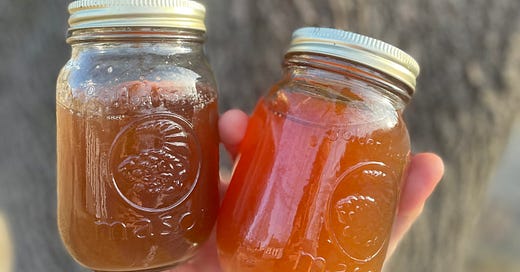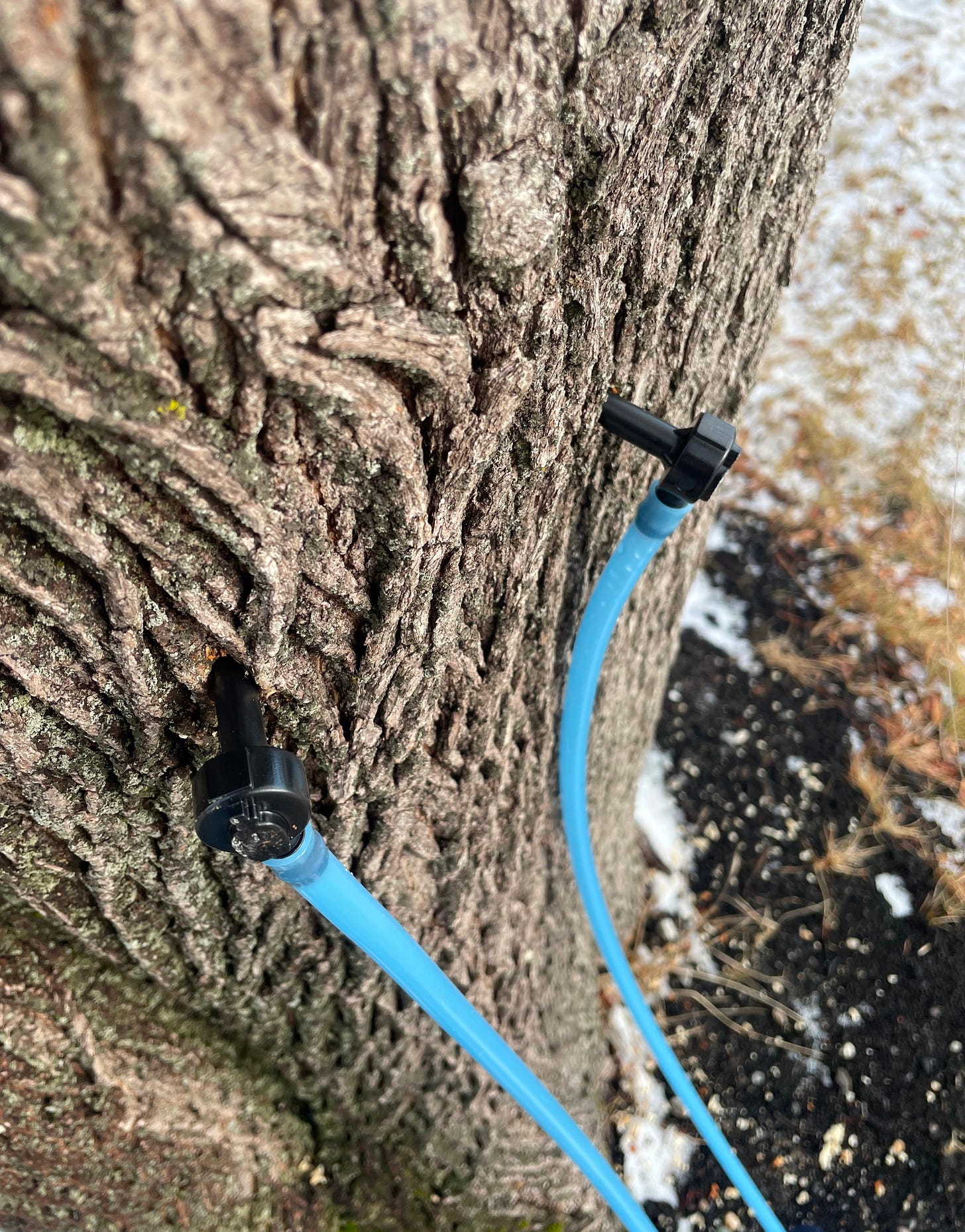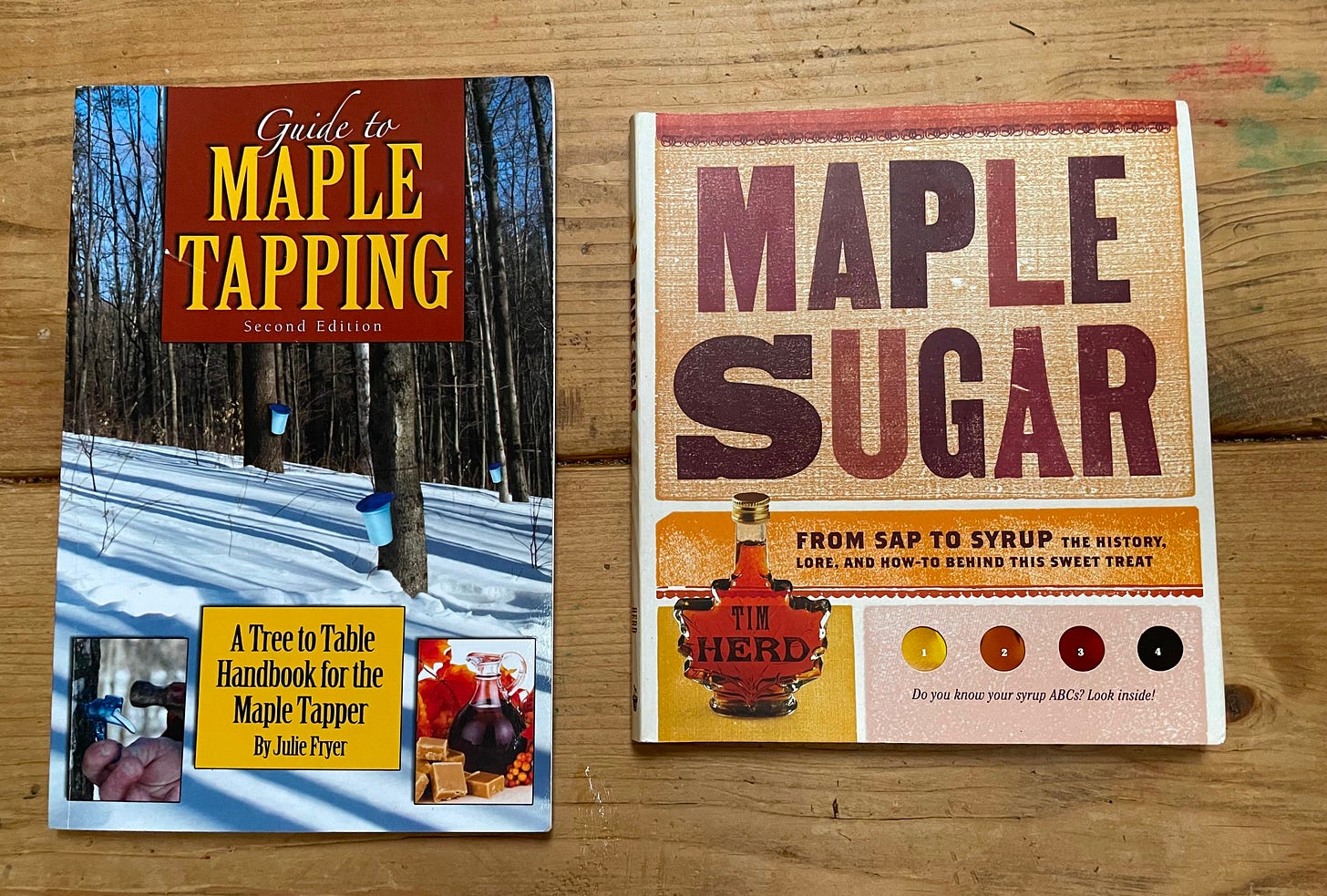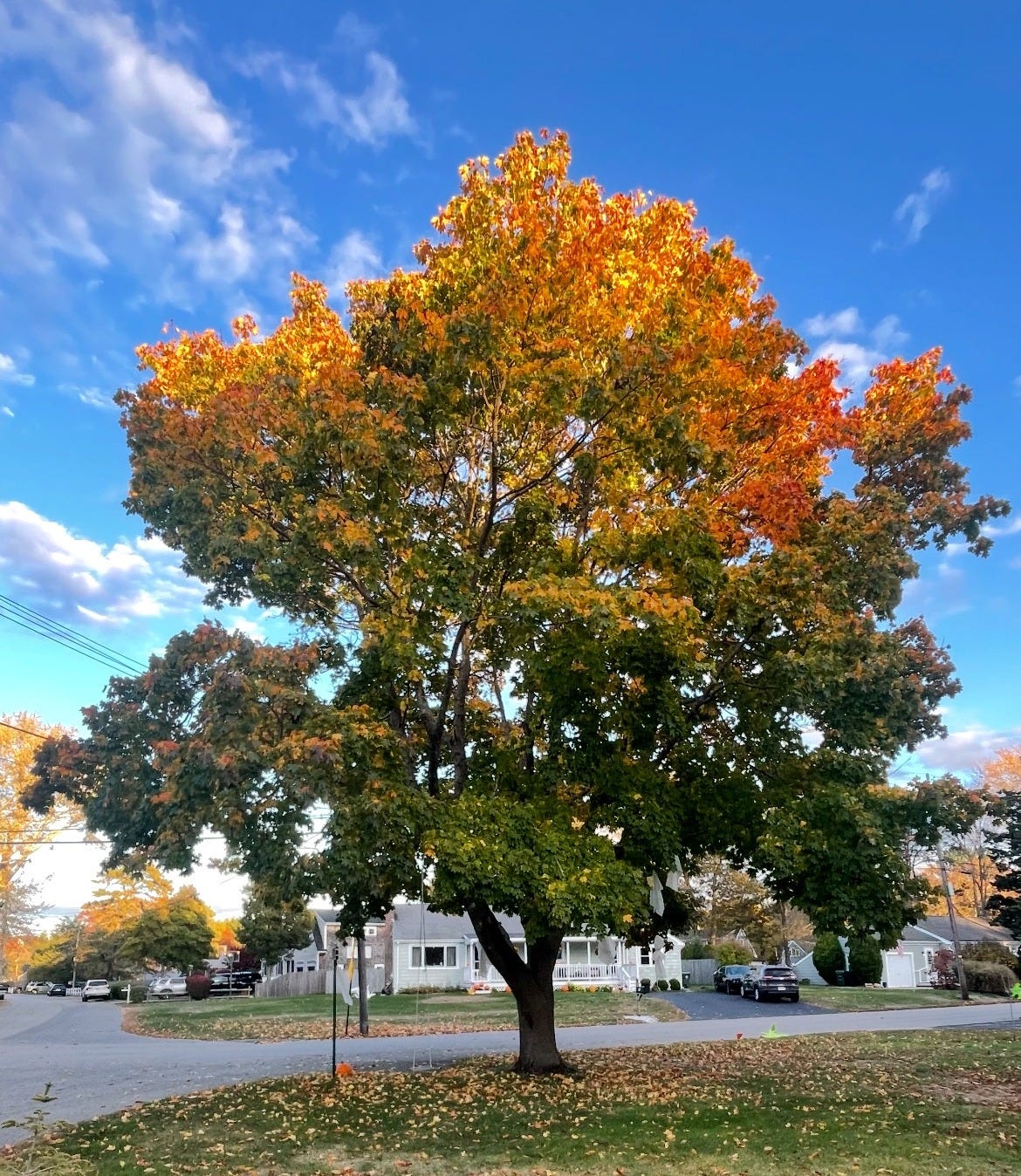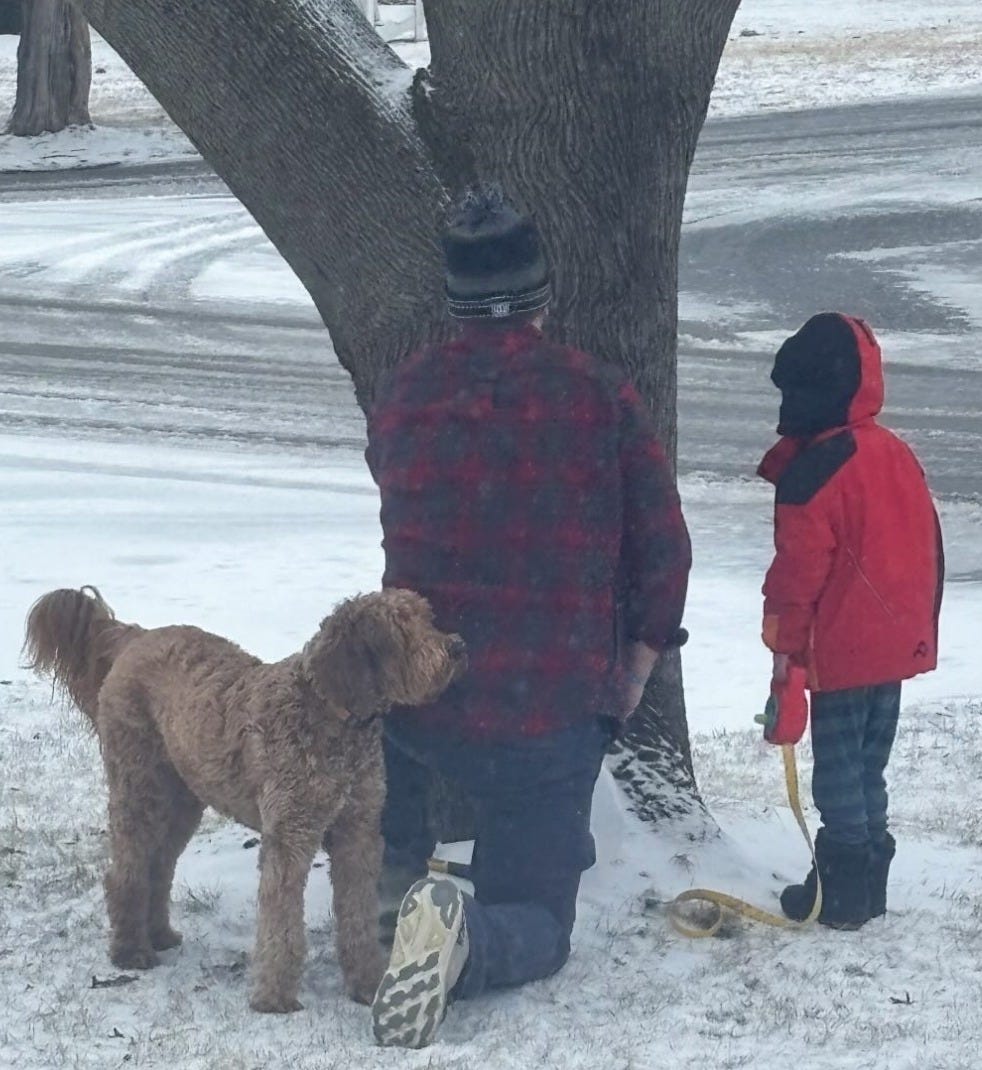“In Vermont, there is maple syrup in it — it doesn't matter what it is. Cake. Ice cream. Coffee. Soup. Mustard. Concrete” — Maureen Johnson
It felt like we finally got our New England seasons back, because it has been a very busy winter. Skating at sunset, snowy winter hikes, ice fishing on local ponds, skiing, sledding, snowshoeing, snowball fights — but now spring is here and the past winter season is a beautiful memory tucked away for a rainy day.
Neverthess, even though we had a great winter, we have jumped into spring with the utmost jubilance, since this is the first year we will be tapping our very own sugar maple, harvesting the sap, and boiling it down to make homemade maple syrup.
Now having done it, I can confidently say it is a magical and rewarding experience.
A Basic Primer on Maple Syrup
Sap is stored in the trees root system and is primarily water, nutrients, and 3%-5% sugar depending on the breed of the maple tree. When the temperatures start to warm up it signals to the tree that spring is on the horizon and sends up nutrient dense sugary sap as a way to energize the buds so they start the process of producing leaves. This is our window to siphon off some of that sweet nectar.
In New England, the sap from maple trees typically start to run from mid-February to mid-March (Valentine’s Day to Saint Patrick’s Day) depending on the temperatures. Ideal conditions for sap flow is a freeze-thaw, freeze-thaw, freeze-thaw pattern. So, at night the temperature needs to be below freezing (32°F) and during the day above freezing — these are the ideal temperatures in which sap runs.
I knew very little about maple syrup and how it was made. I knew that sap was collected at some point and boiled down. Guide to Maple Tapping and Maple Sugar: From Sap to Syrup are both great resources to help you get started.
I write this post as I stare at my kitchen which has been turned into a makeshift sugar shack. The smell of sweet maple sap wafts through the air and condensates on my window; I ponder the juxtaposition between the cold night air and inside my kitchen which is humid from the boil. The full moon shines bright outside my window and the night is quiet and still. I get back to work and realize that making maple syrup is truly an amazing process.
Locating Maple Trees
Take a stroll on your property or in your local woods and identify maple trees in the fall when the leaves are still on the tree which makes them simple to identify.
Tools for Tapping
Once you’ve identified the sugar maples collect the following tools — then simply drill a hole into the tree about waist height (three feet from the ground) and insert your taps and feed the line into a 5-gallon bucket.
Cordless power drill
Tape measure (we used the Little Tykes version)
Painter’s tape
5/16th drill bit
Hammer or rubber mallet
5-gallon food-grade buckets
We picked up a few food-grade buckets from a local sub shop
Spiles (taps) with lines (what we used from Amazon and they worked great!)
Collection and Storage
Once you collect the sap you can boil immediately or freeze the sap and boil it all at once.
Don’t leave it out for too long if the weather warms up — it could go bad!
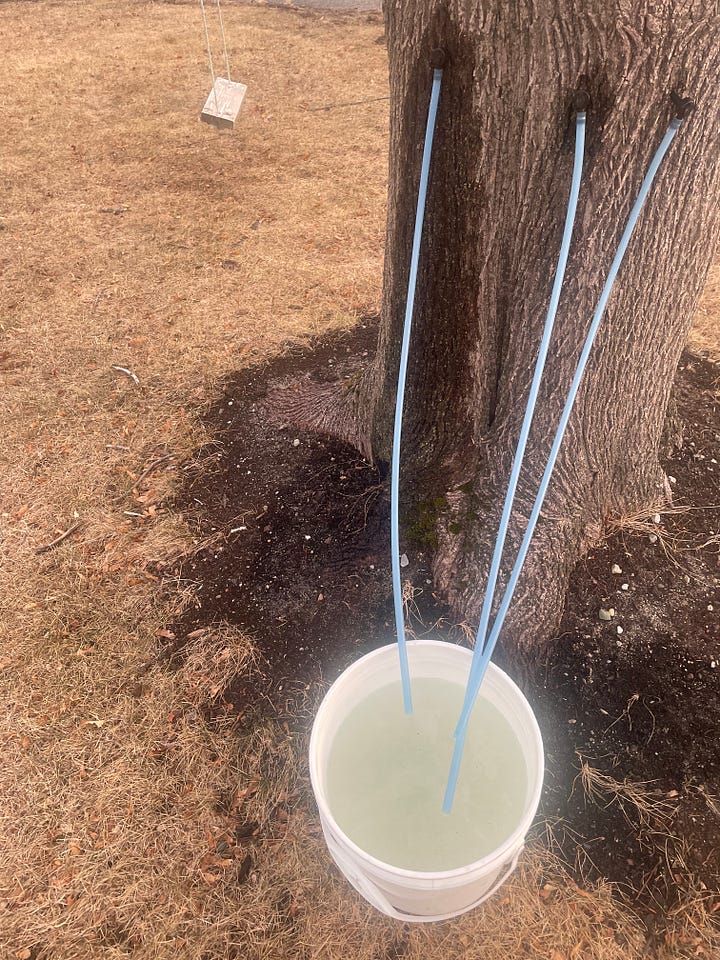
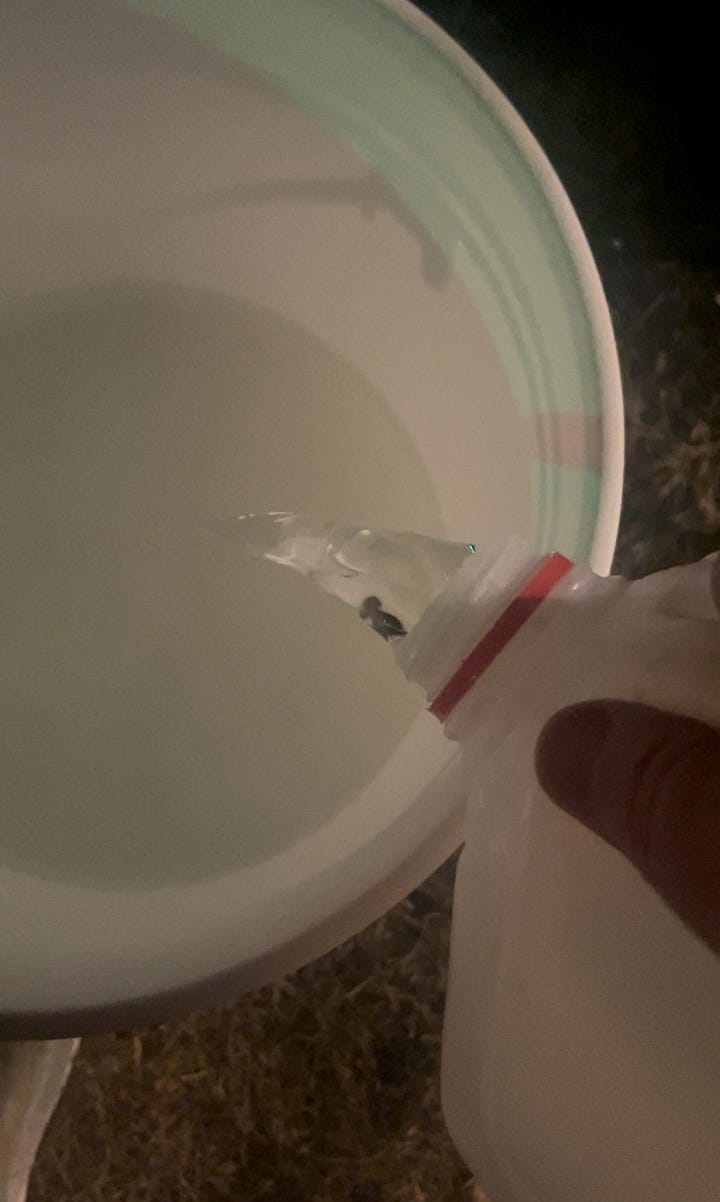
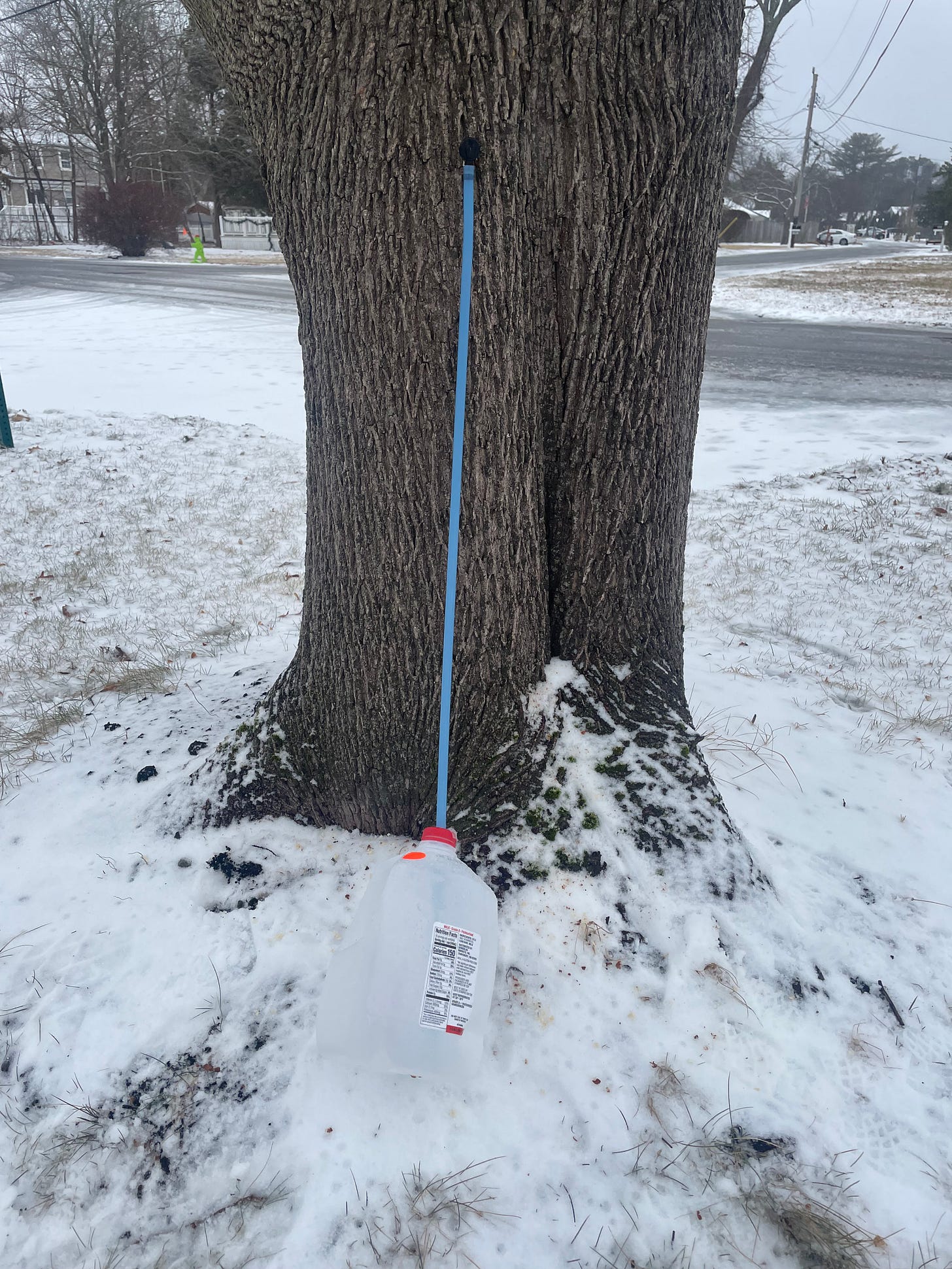
Evaporation and Finishing
Collect your sap and boil until your thermometer reaches 219 degrees farenheit — at this point, you’ve got syrup! While still hot, pour the syrup over a coffee filter into a mason jar.
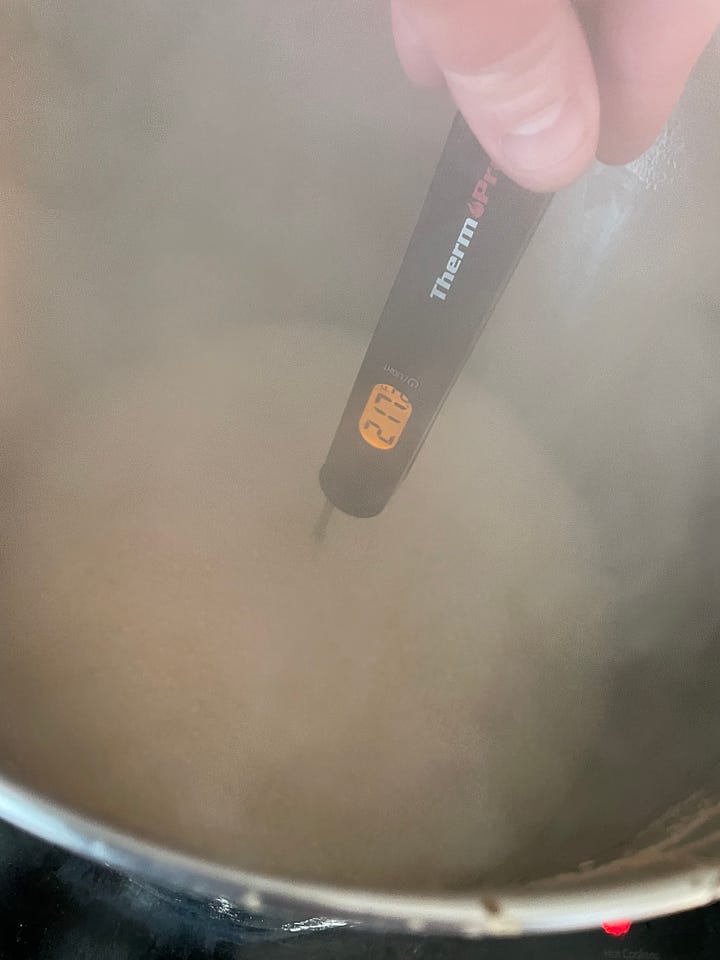
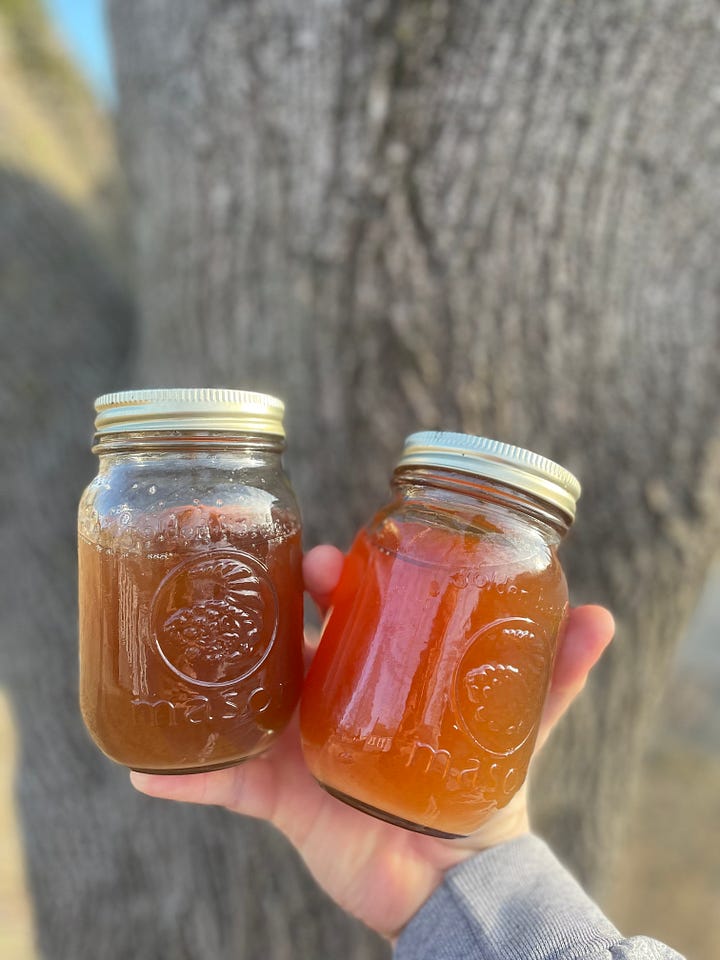
Making maple syrup instills the lesson that work ethic, process, and patience yields incredible results. It is also fun, inspiring, and showcases the natural resources we have all around us.
I learned so much and gained a greater appreciation for the process of making maple syrup and am looking forward to taking part in this New England tradition for many years to come. It is hands-down the best maple syrup I have ever tasted.
"I love maple syrup!"— Pug
See you next week — in the meantime start working on those garden projects and head to your local nursery to pick out your seeds for the spring growing season — the warm weather is here and spring is on the horizon.
—Brendan, Modern Renaissance Man
Brendan Martin Coyne is an award-winning writer, voracious reader, history buff, avid outdoorsman, sap gatherer, shellfish harvester, artisan woodcarver, amateur stargazer, hack gardener, and scratch cook. In his spare time, he is a novice hunter, mediocre fisherman, bourbon enthusiast, and loves anything to do with a beach or being immersed in nature with his family.

